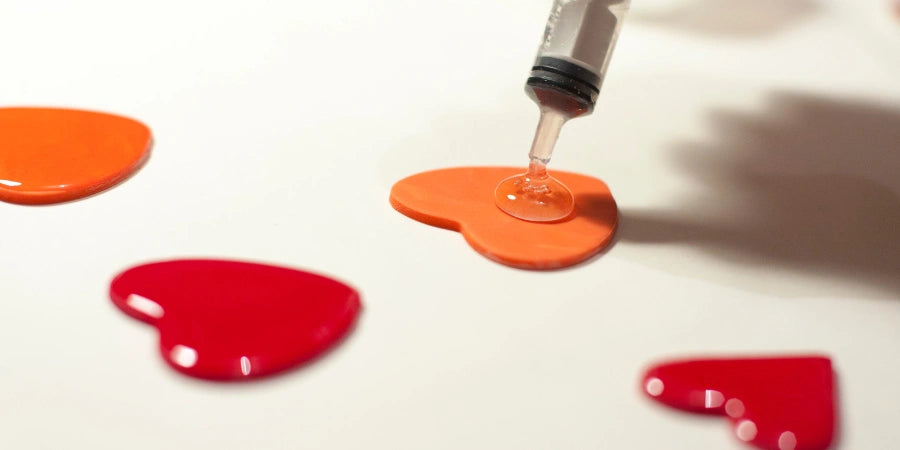Uncovering the Bubble Trouble in Resin Art: Causes and Solutions
Resin art has exploded in popularity, hooking artists with its versatility and stunning visual effects. But even the most enthusiastic artist can be foiled by a common issue: bubbles. They can mar the crystal-clear finish you aim for, leaving behind a cloudy or uneven surface.
Don't be worried, though! Understanding what causes bubbles and how to prevent them is the key to achieving those flawless, professional-looking pieces. This blog will deal with bubble prevention that will help you create your next resin art masterpiece. If you wish to learn these techniques under professional guidance, we recommend you enroll in a resin art workshop.
Understanding the Causes of Bubbles in Resin Art
One of the main causes of bubbles in resin art is improper mixing of the resin and hardener. When resin and hardener are not mixed thoroughly, air bubbles can get trapped in the mixture and create unsightly bubbles in your artwork. Let us understand the reasons through the following points:
- Mixing Technique: Improper mixing of resin and hardener can introduce air bubbles into the mixture. Mix slowly and thoroughly to minimize the risk of bubbles forming.
- Environment: Working in a space that is too cold or too humid can also contribute to the formation of bubbles in resin. Try to work in a controlled environment with moderate temperatures and low humidity.
- Pouring Technique: Pouring resin too quickly or from too high of a distance can create turbulence in the mixture, forming bubbles. Take your time and pour resin slowly and carefully to avoid trapping air.
- Quality of Materials: Your artwork may become more prone to bubbles if you use cheap resin or hardener. To get the finest outcomes, spend money on premium materials.
Solutions to Prevent Bubbles in Resin Art
To prevent bubbles in your resin art, consider the following solutions:
- Mix Thoroughly but Slowly: Take your time when mixing the resin to prevent air bubbles from forming. Use a stirring stick and stir in a gentle figure-eight motion.
- Let Resin Rest After Mixing: After mixing the resin, allow it to rest for 2-3 minutes to let any bubbles rise to the surface. You can also gently blow on the surface to encourage bubbles to come up.
- Use a Torch Carefully: To eliminate bubbles from the resin, hold a torch 6 to 8 inches above the surface and rotate it in a circular motion. Be careful not to hold the torch too close, as this can cause the resin to bubble up.
- Work in a Warm Environment: Resin tends to be less dense in warmer temperatures, which can help bubbles escape more easily. Make sure to work in a room that is around 75-85°F.
- Avoid Overheating: Although heating the resin can aid in releasing trapped air bubbles, exercise caution not to overheat it as this may accelerate the curing process.
Solutions to Bubble Troubles Once They Appear
Even the most skilled resin artist can encounter the occasional bubble. But fear not! Keep the following things in mind:
- Heat Gun: A gentle stream of warm air from a heat gun can coax bubbles to the surface, allowing them to pop. Be mindful of overheating the resin, as this can cause warping.
- Torch Talk (Use with Caution): For experienced artists, a small butane torch can be used carefully to pop stubborn bubbles. Important Safety Note: Only use a torch in a well-ventilated space and take extreme care to avoid igniting the resin or fumes.
- Straw Technique (Proceed with Caution): This method requires some finesse. Use a straw to blow on the surface of the bubble gently. The CO2 in your breath can help break the bubble's surface tension. Caution: Blowing too hard or introducing moisture from your breath can create more problems.
- Toothpick Intervention: A toothpick can be a handy tool for bubbles trapped near the edges. Gently drag the toothpick along the bubble to nudge it toward the surface where it will pop.
- Pressure Pot (For Advanced Users): A pressure pot can be a game-changer for larger projects. Applying pressure during the curing process forces air bubbles out of the resin. This technique requires specific equipment and safety precautions, so research is essential.
Selecting the Right Bubble-Blasting Technique
The best method for dealing with bubbles depends on the severity of the problem and your comfort level.
- For a few small bubbles: Start with the heat gun or straw technique.
- For stubborn bubbles near the edges: The toothpick method can be effective.
- For larger projects with extensive bubbling: Consider the pressure pot, but only if you have the proper training and equipment.
Remember: When in doubt, it's always better to move on the side of caution. Avoid using too much heat or force, which can damage your project.












